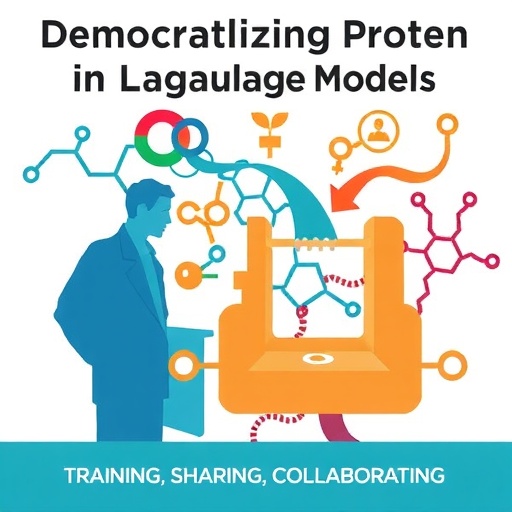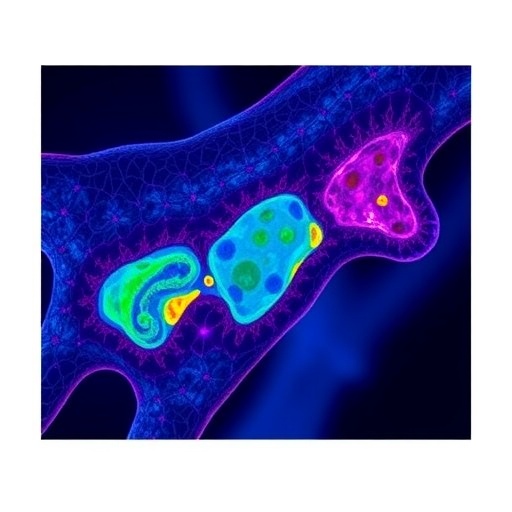In the rapidly evolving field of protein science, the intersection with artificial intelligence has given rise to transformative innovations that promise to reshape biological research. Among these, the development and deployment of large-scale protein language models stand out as powerful tools capable of decoding the complexities of proteomic sequences and functions. However, these sophisticated models have traditionally posed significant challenges, primarily due to the intricate expertise required in deep machine learning frameworks. This barrier has limited access, confining the benefits of protein language modeling largely to specialized computational laboratories. Now, a breakthrough framework called SaprotHub emerges as a beacon of democratization, enabling a wider spectrum of scientists to train, deploy, and collaboratively enhance protein language models with unprecedented ease.
Protein language models operate by learning the ‘language’ of amino acid sequences, uncovering hidden patterns and relationships that are otherwise undetectable by human analysis alone. Their applications span from understanding protein folding and function to accelerating drug discovery pipelines and enriching synthetic biology designs. Nevertheless, the sheer computational intensity and the technical depth required for building and refining these models—from curating training datasets to fine-tuning hyperparameters—have been stumbling blocks deterring many researchers outside deep learning circles. In this context, SaprotHub offers a transformative shift by presenting an intuitive platform specifically designed to lower the entry barrier while expanding collaborative potential.
At the heart of SaprotHub lies an integrated framework that supports the entire lifecycle of protein language model development. It carries the dual function of simplifying the complex computational tasks involved in training and prediction, while also providing robust infrastructure for storage, sharing, and version control of models. This architecture fosters a community-driven environment in which researchers across disciplines can contribute their insights, datasets, and modeling innovations without needing extensive coding skills or deep learning expertise. The platform thus bridges the gap between computational biology and experimental research, promoting a more inclusive scientific innovation ecosystem.
One of the flagship components of SaprotHub is ColabSaprot, a user-friendly interface built on Google Colab. This strategic choice leverages the accessibility and cloud-based computational resources of Colab, a widely embraced environment particularly popular among students and researchers for its convenience and minimal setup requirements. ColabSaprot simplifies protein model training workflows by automating complex backend operations and providing neatly packaged scripts that reduce user intervention and potential errors. By doing so, researchers can now engage with protein language modeling using little more than a web browser and their own creative ideas.
The implications of ColabSaprot extend far beyond convenience. By removing computational infrastructure constraints and expertise requirements, it ushers in a new era where protein modeling becomes a communal, iterative process. Teams from different institutions worldwide can build on each other’s models, share optimizations, and jointly validate predictions, thereby accelerating the experimental feedback loop essential for biological discovery. This new collaborative paradigm mirrors successful open science movements seen in genomics and systems biology, promising to unleash a similar wave of rapid progress in protein analytics.
Moreover, the SaprotHub platform incorporates advanced functionalities that cater to diverse experimental needs. It supports customizable training pipelines allowing scientists to tailor models based on specific protein families, functional annotations, or evolutionary data. Such adaptability is critical for pushing the boundaries of protein understanding, especially given the vast heterogeneity of proteomic data. Researchers can harness SaprotHub to address niche biological questions or to generalize findings that reveal universal principles of protein behavior, thereby maximizing both targeted and broad-spectrum scientific impact.
Another key innovation embedded within SaprotHub is the use of extensive metadata tracking and model provenance features. Every training run, parameter set, and data source coupled to a model is meticulously logged, ensuring reproducibility and transparency—cornerstones of rigorous scientific practice. This capability not only bolsters confidence in model predictions but also facilitates audit trails required for regulatory compliance in downstream applications such as pharmaceutical development. By doing this, SaprotHub positions itself at the crossroads of cutting-edge research and practical, real-world deployment.
The platform also addresses a perennial challenge in protein research: the need for continuous model improvement as new data becomes available. SaprotHub’s architecture supports incremental learning, enabling existing models to be updated and refined with fresh inputs without necessitating full retraining. This feature is particularly invaluable in fast-moving fields where new protein sequences or structural data often emerge. Continuous updating ensures that models remain state-of-the-art and relevant, optimizing predictive accuracy and utility.
From an educational standpoint, SaprotHub presents a fertile ground for training the next generation of interdisciplinary scientists. By lowering technical barriers, it allows students and early-career researchers to gain hands-on experience with real-world protein language models. The ease of use paired with the power of collaboration cultivates an environment of exploratory learning and peer-to-peer mentorship. This capability promotes diversity in scientific inquiry, nurturing innovative thinking that bridges computational and biological sciences.
Importantly, SaprotHub’s democratization also brings ethical and equitable considerations to the fore. By decentralizing access to advanced modeling tools, it reduces the knowledge and resource gaps that perpetuate disparities in scientific opportunities globally. Researchers from under-resourced institutions or regions can now partake in high-impact biological modeling, thus fostering a more inclusive global research community. Such democratized access is critical for accelerating scientific breakthroughs that require diverse perspectives and data sources.
The potential applications leveraging SaprotHub’s framework are vast. Drug discovery initiatives, for example, stand to benefit immensely from rapid protein function prediction and interaction analyses, streamlining candidate screening and toxicity assessment phases. Similarly, synthetic biology can utilize customizable models to design novel enzymes or protein therapeutics with enhanced functionalities. Environmental science, evolutionary biology, and personalized medicine also represent key domains where SaprotHub-enabled models could generate transformative insights.
While SaprotHub significantly simplifies the protein language modeling process, it does not compromise on scientific rigor. Advanced users retain the ability to dive deeper into algorithmic tuning and data manipulation if desired. This dual-level accessibility ensures that the platform can scale from novice users to experts, serving as a unifying hub for diverse expertise levels. This feature enhances the platform’s longevity and adaptability as both computational methods and biological challenges evolve.
The collective infrastructure provided by SaprotHub aligns well with current trends toward open science and data democratization. It integrates seamlessly with existing bioinformatics databases and platforms, facilitating cross-referencing and data sharing across the biochemical research landscape. Through SaprotHub, large-scale collaborative projects can now efficiently pool resources and knowledge, breaking down traditional silos that compartmentalize and slow scientific advancement.
In conclusion, by pioneering an intuitive, collaborative, and versatile platform for protein language model training and sharing, SaprotHub represents a critical step forward in the democratization of advanced computational biology. Its user-friendly interface and powerful backend infrastructure promise to expand access and catalyze innovation across disciplines, accelerating the pace of discoveries in protein science. As the biological research community continues to embrace AI-driven approaches, tools like SaprotHub will be indispensable in transforming data-rich insights into tangible scientific and societal benefits.
Subject of Research: Democratization of protein language model training and collaborative bioinformatics infrastructure.
Article Title: Democratizing protein language model training, sharing and collaboration.
Article References:
Su, J., Li, Z., Tao, T. et al. Democratizing protein language model training, sharing and collaboration. Nat Biotechnol (2025). https://doi.org/10.1038/s41587-025-02859-7
Image Credits: AI Generated
Tags: accessibility in computational biologyartificial intelligence in protein sciencechallenges in protein modelingcollaborative protein research toolsdemocratization of protein language modelsdrug discovery using AIenhancing proteomic sequence analysislarge-scale protein language model trainingprotein folding and function analysisSaprotHub framework for scientistssynthetic biology innovationsuser-friendly machine learning platforms





